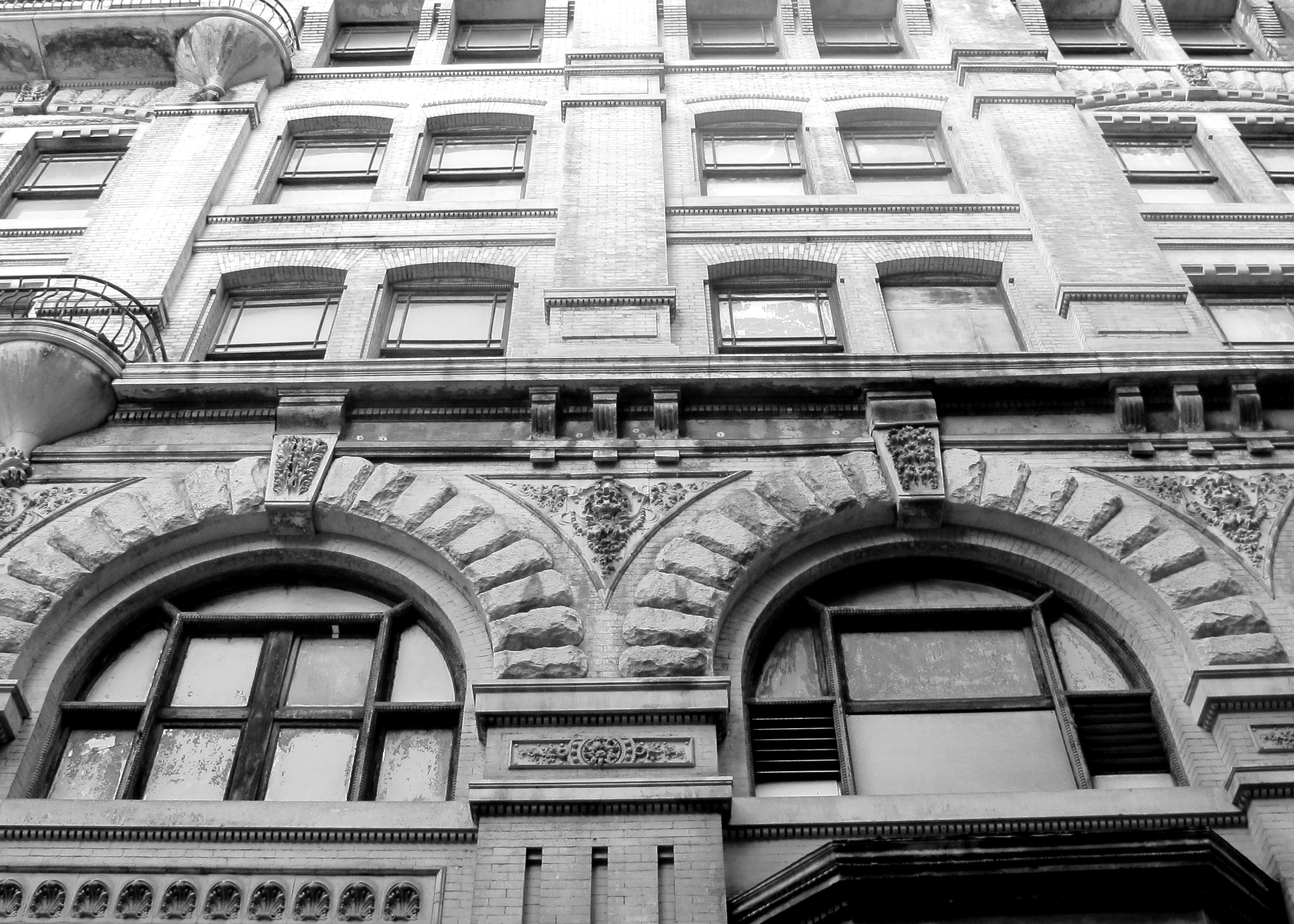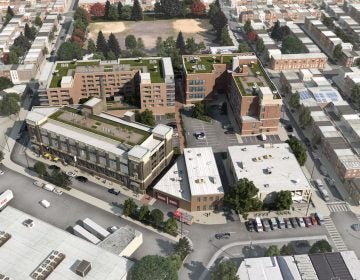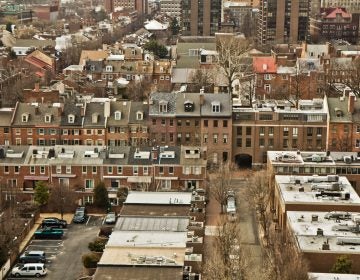Retrofitting Philadelphia: Five Takeaways

It is a classic Philadelphia problem: We’re an aged city, rich with old buildings ripe for new futures.
Our stock of older, smaller buildings is an extraordinary, but undervalued, asset. So how can we seize the opportunity to reuse our old buildings, stabilize neighborhoods and turn Philadelphia into a city that shows its age proudly?
That’s what Retrofitting Philadelphia: The Partnership for Building Reuse explores. The study, released this week by the National Trust for Historic Preservation’s Green Lab and the Philadelphia chapter of the Urban Land Institute, aims to stimulate our thinking about reuse by illuminating the embedded value in old buildings, overcoming obstacles in repurposing these buildings, and mapping areas of prime for revival.
The report found that entrepreneurs, younger residents and newcomers, our most popular restaurants and bars, and creative industries flock to Philadelphia’s blocks of dense, old, small-scale buildings. Given that connection, the report argues, reuse of these buidlings supports Philadelphia’s mounting economic and neighborhood revival. That means reuse should be prioritized in our political dialogue and be part of any revitalization strategies.
To be sure, reuse is not simple: Philadelphia remains a weak market city with challenged neighborhoods, high construction costs, redevelopment incentives that don’t work well for small projects, and a complex regulatory environment. To stimulate the rehabilitation of its old buildings, Philadelphia will need more targeted and diversified incentives, more tools and specific technical assistance, and new partnerships in reuse.
You can read the whole report here. Here are five takeaways I’m still chewing on:
Think Broadly
Even though Retrofitting Philadelphia is co-produced by the National Trust for Historic Preservation, it’s not about pure preservation. It is instead an invitation to consider how the broader goal of reuse might be a more useful starting point than strict historic preservation approaches to old buildings.
Purist preservation through local historic designation and regulation is one way to keep the kinds of small, old buildings up and running, but it’s often too rigid. A more holistic approach that emphasizes reuse over demolition and neglect could result in a kind of backdoor preservation.
At a panel discussion after the report was presented on Tuesday, it was telling that there was no mention of historic designation, preservation regulations, or the Philadelphia Historical Commission. These are new days and we need to be less uptight in our thinking about preservation and more willing to simply encourage sensitive, smart reuse.
Philly has a lot of old buildings, not all of them are historic, but many are worth creative adaptation. The report suggests that we place a higher value on “community character” – as opposed to architectural pedigree or a moment in history – as the quality that makes our neighborhoods unique and desirable.
Go Back to Basics
Retrofitting Philadelphia notes that of the roughly 500,000 buildings in the city, only 2% are designated as historic locally and 4% are listed in the National Register of Historic Places. According to the report’s authors, that’s small for a city of our size.
About 70% of Philadelphia’s buildings were constructed before World War II. Since the basic age requirement to be eligible for listing in the Philadelphia or National Registers of Historic Places is 50 or more years old, we have an extraordinary roster of buildings potentially eligible for listing.
That’s great except we have no idea what’s historic or what’s merely old. Philadelphia has never conducted a comprehensive citywide survey of its historic resources. As a result we have only a partial understanding of which buildings are worthy of historic designation. What is already listed reflects a somewhat scattershot approach. How can Philadelphia do an effective job of encouraging building reuse if we don’t really know what we have?
Historic designations matter partly because these distinctions open the door to financial incentives, most notably state and federal rehabilitation tax credits. Listing (or eligibility for listing) in the National Register of Historic Places opens the door to the federal rehabilitation tax credit – probably the single most effective urban redevelopment tool of the last generation.
After a citywide survey, Retrofitting Philadelphia recommends that areas with a high potential for revitalization should be pursued as new National Register districts to accelerate reuse projects.
Differentiating the historic from the merely old will help the city to set preservation priorities, target incentives and tools, and coordinate preservation/reuse with ongoing planning efforts as part of Philadelphia2035.
Los Angeles has recently undertaken a citywide survey thanks to significant technical and financial support from the Getty Conservation Institute. It is time one of our local foundations recognized how much preservation and reuse of older buildings contribute to urban sustainability, neighborhood revitalization, and economic vitality and help our city complete a survey.
Target TOOLS & INCENTIVES
Beyond making more buildings eligible for state and federal tax credits, Retrofitting Philadelphia suggests several tools to stimulate reuse, from tax abatements to the price of public property.
The report recommends that the city’s 10-year property tax abatement program be expanded to 20 years in certain neighborhoods and/or for low-income property owners “that need deeper subsidies to encourage building reuse.”
Since 1997 about 16,000 properties have received the 10-year property tax abatement. Of those 16,000 that 6,246 were rehabilitation projects, and 200 of these also used federal rehabilitation tax credits. (That number should be far higher, but given how few buildings in Philly have already been determined eligible for the federal credits it’s not so surprising.) If the tax abatement was more targeted and matched with other incentives (like federal rehabilitation or affordable housing tax credits for big projects or maybe small credits for homeowners) reuse projects in challenged neighborhoods might be possible for more developers.
One suggestion that turns the city’s vacant buildings into opportunities is making reuse a clear priority in the Land Bank’s strategic plan. The Land Bank could sell buildings at a discount if the prospective owner commits to rehabbing it within a tight timeframe – that’s a subsidy too. The Land Bank can also strategically acquire and mothball key properties until market conditions are right for reuse.
TEST and EXPERIMENT
Surveys and incentives are pulled straight from the classic preservation toolkit. But let’s remember that Philadelphia also has a history of forward-thinking preservation practice. Our preservation law predates most others, we used urban renewal dollars to restore and reuse a then derelict Society Hill. The time for preservation experimentation is here again.
One of the compelling ideas in Retrofitting Philadelphia is the creation of “adaptive use innovation zones” where a more holistic approach to renovation and reuse is tested. Here, perhaps conflicts between reuse objectives and requirements in the zoning code can be relaxed to realize a rehab project.
The report also suggests a partnership program between city staff, advocacy groups, and private developers tasked with developing a targeted reuse assistance plan for a particular neighborhood. Test it out, see what works, and scale up to other areas. Experts can also help identify common challenges and best practices for reusing certain building types – like mills or churches – and help owners by creating technical assistance manuals.
Now’s The Time
In 2015 Philadelphians will consider mayoral candidates and see a new Land Bank become operational. Meanwhile neighborhoods will continue to struggle against the twin threats of vacancy and blight. The time is ripe to put reuse on the political agenda and make it a key piece of the city’s ongoing planning and zoning reform efforts.
It’s time to think about reuse as a key approach to addressing our city’s crippling vacancy, limp tax base, crumbling housing stock, and keeping stable neighborhoods from eroding. That, in turn, could put preservationists, developers, neighborhood activists, and politicians on fresh common ground.
WHYY is your source for fact-based, in-depth journalism and information. As a nonprofit organization, we rely on financial support from readers like you. Please give today.








